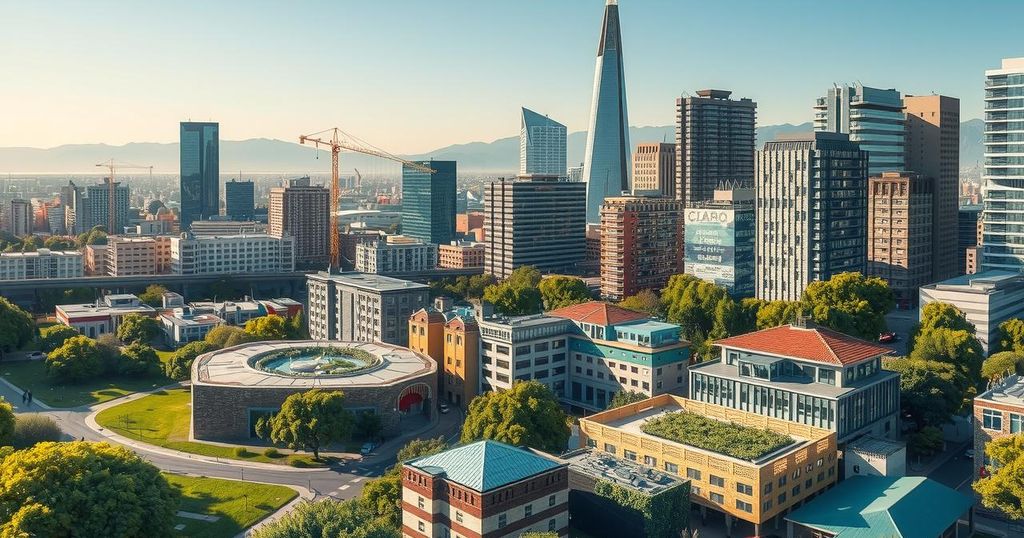Johannesburg’s Transformation: From Crime Epicenter to Urban Revival

Johannesburg is shifting from a crime-ridden past to a revitalized urban center with rising demand for residential spaces. Key projects like Jewel City and community initiatives are improving safety and perceptions. Despite ongoing challenges, there is a collective vision for Johannesburg to be recognized among global cities.
Johannesburg has undergone a remarkable transformation from being notorious for crime to becoming a revitalized urban center. Ponte Tower, a significant landmark constructed in 1975, symbolizes this change. Once engulfed by crime and neglect in the 1980s, the building now shines post-FIFA World Cup, regaining its population and vibrancy with around 75% occupancy after the pandemic. Despite challenges like ongoing crime and emerging water shortages, the city is on a path of improvement.
Ithemba, a property company working on urban regeneration, reports a surge in demand for residential spaces in the Central Business District (CBD). Their project, Jewel City, which started during the pandemic, is thriving, with expectations to double leasing to 14,400 properties shortly. Alan Tait from Ithemba notes the rapid filling of spaces post-Covid, revitalizing previously neglected districts.
Initiatives like JoziMyJozi are contributing to the city’s resurgence by addressing safety and visibility concerns through projects like lighting up public spaces. CEO Bea Swanepoel emphasizes the goal of restoring hope to residents via impactful projects, ranging from beautification efforts to addressing homelessness and infrastructure. The city also anticipates hosting the G20, potentially attracting fresh investments.
Community organizations like Dlala Nje are working to enhance the public’s perception of Johannesburg, focusing on solutions to urban challenges. Sifiso Zikhali from Dlala Nje identifies their success in attracting visitors, indicating a shift in local sentiment towards the city. The overarching intention is to elevate Johannesburg’s status as a desirable global city.
Johannesburg’s transition illustrates the potential for urban renewal through dedicated projects and community engagement. While challenges persist, the concerted efforts of residents and organizations have initiated a dynamic change. The vision of Johannesburg as a safe and thriving urban environment appears increasingly achievable.
Johannesburg is a major city in South Africa, once considered one of the most dangerous urban areas globally. Its history is marked by crime, particularly in the 1980s, when significant buildings like Ponte Tower fell into disarray. In recent years, however, projects focused on urban regeneration following events like the FIFA World Cup have paved the way for a revitalized cityscape. Despite ongoing challenges such as crime and utility shortages, initiatives aimed at urban improvement and community engagement are transforming Johannesburg into a more appealing place.
Johannesburg’s evolution from a crime-ridden city to a rejuvenated urban environment showcases the power of strategic redevelopment and community involvement. Although it still faces significant challenges, including crime rates and infrastructure issues, ongoing efforts from organizations and local initiatives demonstrate a positive trajectory. The city’s ambitions to attain global recognition akin to major metropolises depend on continued commitment to enhance safety, livability, and economic opportunity.
Original Source: www.bbc.com







